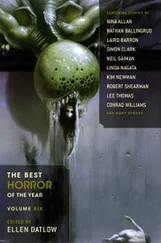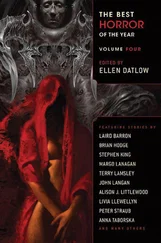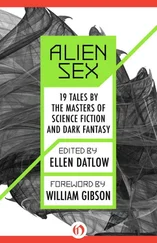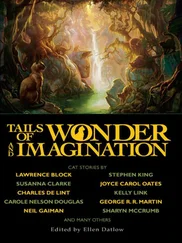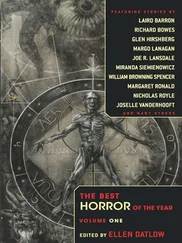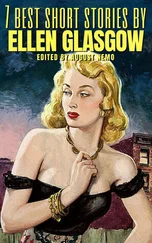AFTER
Nineteen Stories of Apocalypse and Dystopia
Edited by Ellen Datlow and Terri Windling
For Victoria Windling-Gayton and Isobel Gahan, two young women with indomitable spirits
INTRODUCTION
by Terri Windling and Ellen Datlow
WELCOME TO AFTER , A VOLUME OF BRAND-NEW DYSTOPIAN and post-apocalyptic tales for young adult readers by some of the very best writers working today—ranging from best-selling, award-winning authors to rising young stars of the dyslit field.
Before we go any further, however, perhaps we’d better stop and define our terms… which is going to put us in dangerous territory; for blistering arguments about what should and shouldn’t be labeled dystopian fiction have consumed whole Internet forums, convention panels, and book review columns. There is, alas, no single definition that all of us who love this kind of fiction can agree on.
To some folks (including most YA publishers), dyslit is a broad, inclusive genre of tales that take place in darkly imagined futures: ranging from stories that explore the dangers of repressive governments and societies gone bad to books whose plots unfold in bleak, savage, or oppressive post-apocalypse settings. In this usage, the dyslit label conveys more about a story’s overall tone than its plotline (or subtext of societal critique): the worlds depicted are dark ones, in which protagonists must struggle for physical and/or moral survival.
Others folks (including most literary critics) reach back to the classical definition of dystopian literature, which is far more specific: tales of utopias gone wrong. In this view, post-apocalyptic novels are dystopian only if the narrower definition applies—otherwise they are a genre of their own, albeit one that is closely related, and read by many of the same readers. “In a dystopian story,” writes John Joseph Adams (editor of Brave New Worlds: Dystopian Stories , an excellent collection of traditionally dystopian fiction), “society itself is typically the antagonist; it is society that is actively working against the protagonist’s aims and desires.” Now, this may true in some post-apocalyptic tales, but it’s certainly not true in all of them, for many take place in post-disaster settings where human society has broken down altogether. To dystopian purists, such books do not belong on dyslit lists.
As for us, although we respect the purists’ view, we’ve chosen to take a broader road in the creation of this anthology, including both dystopian and post-disaster tales (as well as stories that fall on the spectrum between) in order to reflect the wide range of dyslit beloved by teen readers today. As the popular dyslit author Scott Westerfeld has said (in his essay “Teenage Wastelands” for Tor.com): “…in the YA universe, the terms ‘post-apocalyptic’ and ‘dystopian’ are often used interchangeably. This grates the pedant’s soul, and yet is understandable. From a teenager’s point of view, a blasted hellscape and a hypercontrolled society aren’t so different. Or rather, they’re simply two sides of the same coin: one has too much control, the other not enough. And, you may be shocked to hear, teenagers are highly interested in issues of control.”
Exactly.
Our anthology sprang from a simple idea: to seek out writers who share our love for dystopian and post-apocalyptic tales, and to ask them to please write stories for us about what happens after .
After what?
A disaster of any kind: political, ecological, technological, sociological…the choice was entirely up to the writer. It could be after a nuclear war or a medical pandemic; after a scientific discovery that resulted in unforeseen and dire consequences; after aliens land, or society crumbles, or the very last drop of oil runs out…It could be after anything so long as the changes provoked are calamitous, fundamental, and long lasting. “We’re not looking for tales focused on the disaster,” we said, “but tales that tell us what happens next : what life is like for young people who are growing up in calamity’s wake, or in ‘perfect societies’ gone wrong, or in the ruins of their elders’ mistakes.”
Our intrepid writers went away with this assignment and came back with the amazing stories that follow: frightening, fascinating, mind-bending stories about dark future worlds that could be our own if something (sometimes the smallest thing) goes badly, irreparably wrong.
These stories approach the “after” theme from a variety of directions—some of them straightforward in the telling, and some of them sly, tricksy, and surprising. Like the field of dystopian literature itself, the stories draw upon the tropes of several overlapping genres: science fiction, fantasy, horror, mystery, surrealism, and satire…with a bit of romance ( apocalyptic romance, of course!) thrown in for good measure.
In the worlds conjured by the stories that follow, you’ll find floods, famine, and pestilence; you’ll find monsters, horrors, despair, and devastation. And also, in the darkness, bright sparks of courage and resistance.
Much like the world we live in.
THE SEGMENT
by Genevieve Valentine
WHEN MASON SHOWED ME THE SCRIPT SIDES FOR THE CHILD soldier, I jumped on it.
“Think about this,” he said. “The segment could be huge. Is that how you want to make your career?”
He talked a big game, but this segment was special. He had to know it, too; I was the only one at our agency he’d even talked to about it.
I said, “I’ll take my chances.”
“All right,” he said. He looked serious, but I was pretty sure he was just full of it.
The best gig I’d had so far was the front half of a black bear for a nature documentary. It was on cable.
I’m not complaining—you have to pay your way at the agency, and rent be not proud—but I needed to earn some more, soon, and “bear half ” didn’t set your career on fire.
Face time was an upgrade. And this wasn’t some bit part as a muddy orphan in an establishing shot. This was the big time.
This was the evening news.
That night I walked under our painted motto (Let Those Who Would Be Fooled, Be Fooled) into the dining hall, packed with kids from the Lowers that the agency hired out as sympathetic faces on news segments for the Uppers to go watch when they were feeling generous.
I sat down, grinning, next to Bree.
“I’m in the audition pool for a soldier.”
She barely looked up from her vegetable mash. “Oh? Congratulations.”
“Yeah,” I said. “It’s big. Investor backing for the cause, too, so the pay is pretty solid.”
“Wonderful,” she said. “I was beginning to worry you’d aged out of your best work. It’s nice they’re skewing older on something.”
I was sixteen. Bree was nineteen, and kind of a bitch.
“What’s the story?”
“My brother is missing,” I said, “and he was the last thing I had left of home. Now I’m fighting the people who took him since I’m dead inside anyway, grenades exploding on us any moment, blah, blah, blah. They wanted someone who can handle a gun, not for crying or anything.”
Читать дальше







